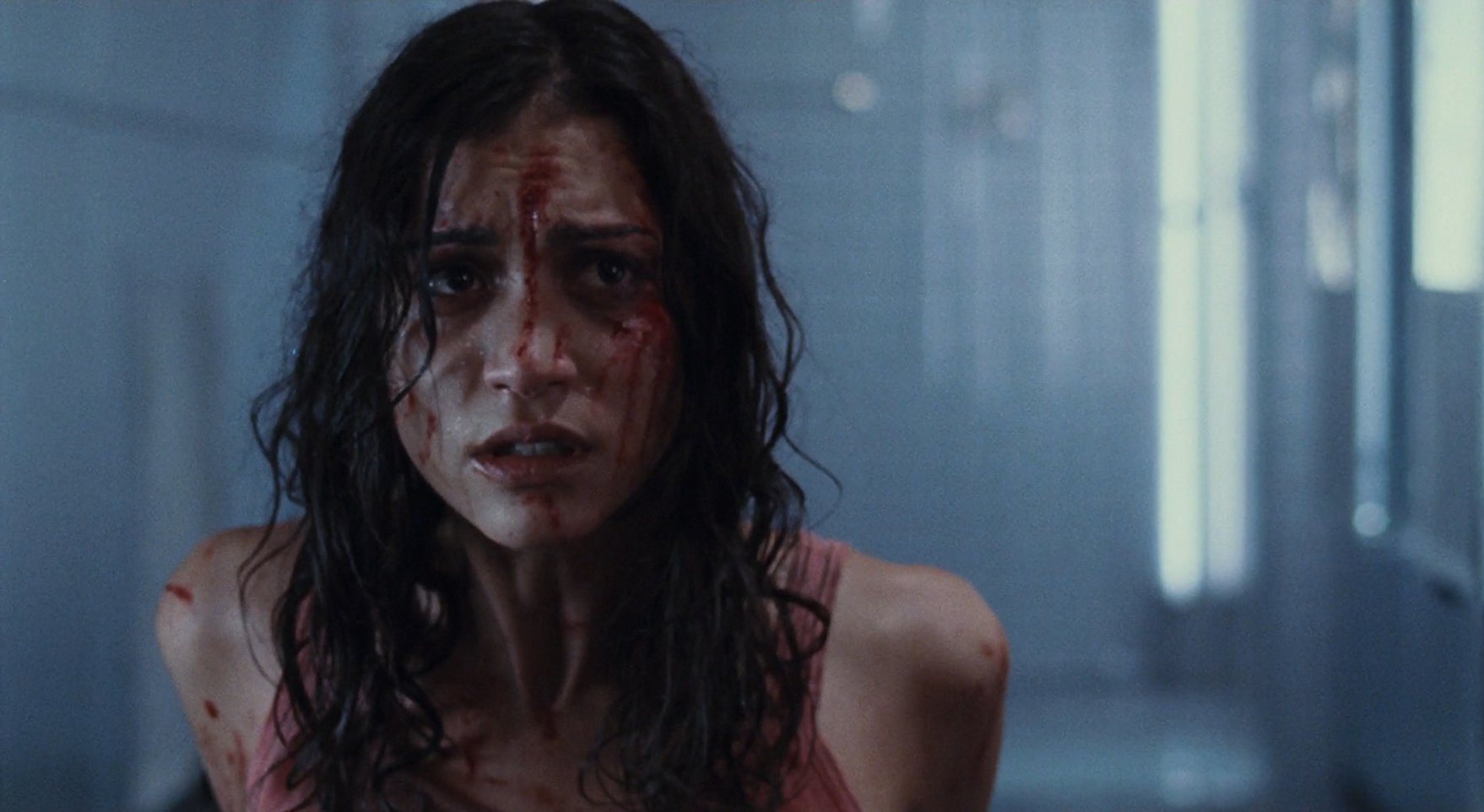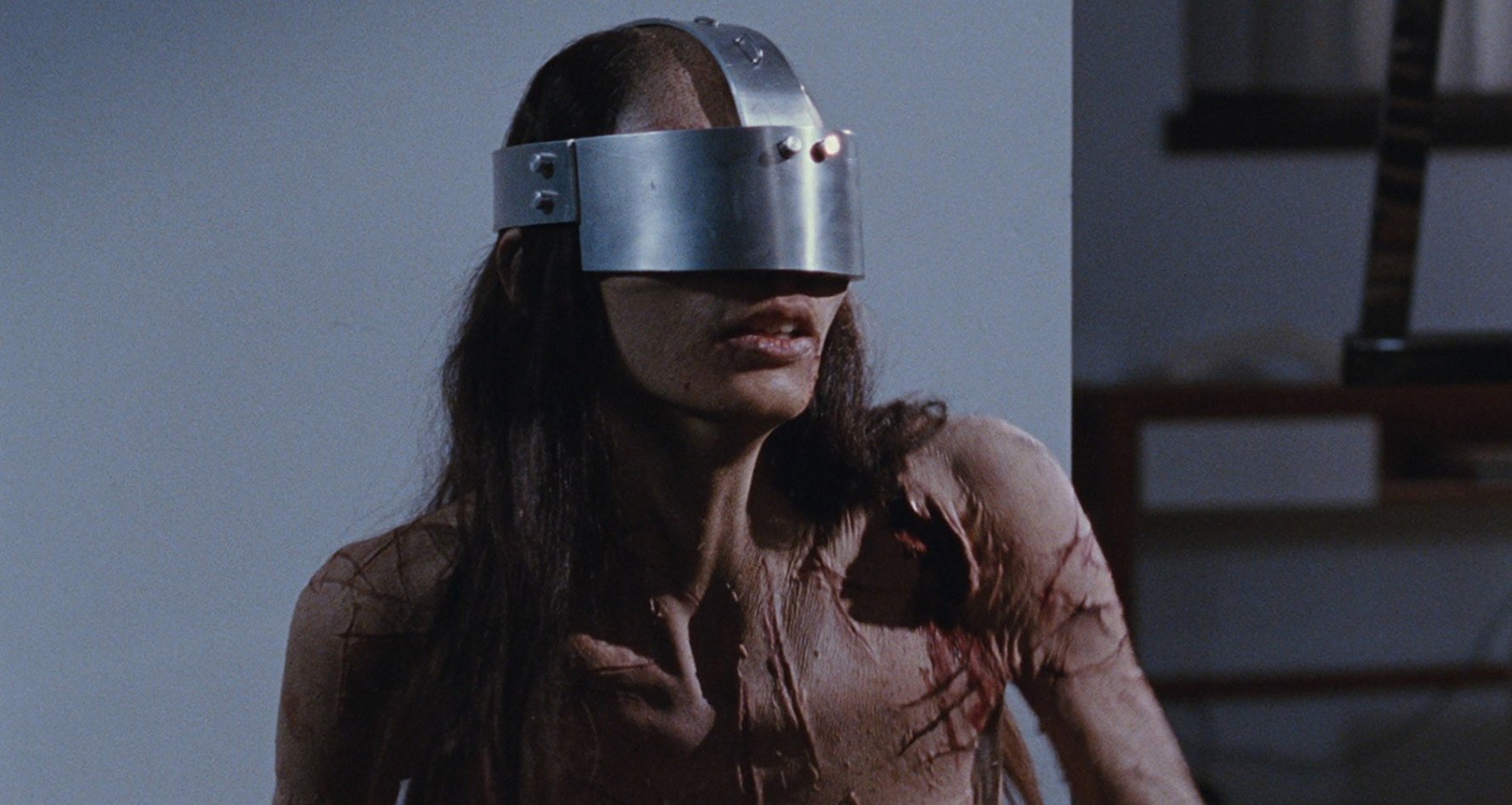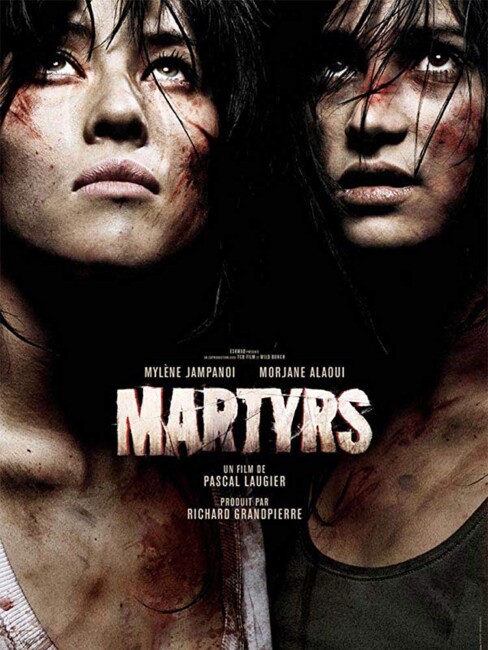France/Canada. 2008.
Crew
Director/Screenplay – Pascal Laugier, Producer – Richard Grandpierre, Photography – Stephanie Martin & Nathalie Moliavko-Visotzky, Music – Seppuku Paradigm, Visual Effects – Buzz Image Group & Eclair Numerique (Supervisor – Didier Dekeyser), Special Effects Supervisor – Antonio Vidosa, Makeup Effects – Benoit Lestang & Adrien Morot, Production Design – Jean-Andre Carriere. Production Company – Wild Bunch/TCB Film/Eskwad/Canal +/Cinecinema.
Cast
Morjana Alaoui (Anna Assaoui), Mylene Jampanoï (Lucie Jurin), Catherine Begin (Mademoiselle), Patricia Tulasne (Gabrielle Belford), Emilie Miskdjian (The Tortured), Juliette Gosselin (Marie Belford), Xavier Dolan-Tadros (Antoine Belford), Robert Toupin (Mr Belford), Isabelle Chassé (The Creature), Mike Chute (The Executioner), Anie Pascale (The Female Executioner)
Plot
Lucie Jurin breaks into the home of the Belford family and shoots the parents and two teenage children with a shotgun. She calls her best friend Anna Assaoui to the house just before she is attacked by a filthy naked figure who brutally slashes at Lucie with a razor. Anna comes and helps clear up the house and bury the bodies but is witness as the naked attacker returns. However, the attacker is only in Lucie’s head. During the attack, she slashes her own throat, killing herself. Anna then rescues a filthy and emaciated woman that she finds chained up beneath the house. As they try to leave, armed people arrive and chain Anna up in the cells under the house. She is now tortured and brutalised as part of an experiment they are engaged in to determine the nature of martyrdom.
Martyrs was the second film from French director Pascal Laugier. Laugier was an associate to Christophe Gans – he directed the making of featurette for Gans’s Brotherhood of the Wolf (2001) while Gans acted as a producer of Laugier’s directorial debut with the ghost story Saint Ange (2004). I found Saint Ange a frustrating film where Pascal Laugier raised an undeniably spooky atmosphere but left a confusing series of loose ends in terms of explanations. Laugier gained widespread acclaim for Martyrs and was for a time subsequently announced as the director of the planned remake of Hellraiser (1987), before going onto the reality bending child abduction horror film The Tall Man (2012), the reality bending home invasion film Ghostland/Incident in a Ghostland (2018) and the Agatha Christie mini-series They Were Ten (2020).
Martyrs sits atop the controversial stories of child abductions that have made headlines in the last few years. Almost certainly, the film was inspired by the high-profile trial of Marc Dutroux that took place in neighbouring Belgium in 2004. The Dutroux trial came with many charges that high-ups in the government were involved and covering matters up, something that the end of the film here implies is also the case. One need look no further than the fact that Martyrs premiered at Cannes one month after the arrest of the Austrian Josef Fritzl who imprisoned his daughter in his cellar as a sex slave for three decades.
France has certainly been pushing the envelope in terms of gore and on-screen brutality over the last few years with films such as High Tension (2003), Sheitan (2006), Them (2006), Inside (2007) and Frontier(s) (2007) – a fad that was nicknamed ‘French Extremism’. Martyrs was celebrated by the horror press as a Torture Porn film. Maybe you could consider it an intellectual Torture Porn film – it is often crafted around a series of unfolding surprises and twists of expectation, not unlike an M. Night Shyamalan film.

It opens with a girl escaping from captivity and being taken to an orphanage where she befriends another girl, only for something unclear to appear in their room at night. The film then jumps forward fifteen years and into the midst of what appears to be an ordinary family at the breakfast table in an everyday crosscut of them joking amid mild parental disapproval, before this is abruptly shattered as a teenage girl (Mylene Jampanoï) bursts in and blows all four family members away with a shotgun. While we are still reeling from the abruptness and brutality of this, the teenage girl is attacked by a filthy, naked figure who starts hacking at her with her own razor. And when she tries to flee from the attack, it appears that the room she takes refuge in contains a girl who is chained up. By this time, we are in total WTF mode trying to work out what is going on.
Part of the puzzle of Martyrs is wanting to make sense of what is happening and understand the relationship between the various characters. How do the two teenage girls bursting into the house relate to the children in the orphanage at the beginning? Why are they targeting a middle-class family? Who is the filthy naked person attacking Mylene Jampanoï? Why are there others chained up and held prisoner in the seemingly ordinary family house? Things become even stranger when [PLOT SPOILERS] Pascal Laugier does a Fight Club (1999) and reveals that the naked, filthy figure attacking Mylene Jampanoï only exists in her head (there is never a clear explanation why – we are left to assume that this is a spectre of her past abuse) and then the figure causes her to slash her own throat, thus doing a Psycho (1960) and disposing of the point-of-view character that we have had for nearly half the film.
In his films, Laugier loves to disorient us with these wild left field twists. As with Saint Ange (although more coherently here), he creates his films as guessing games where audiences do not always get easy clues as to what is going on but often have to piece things together for themselves, while the entirety of the subsequent The Tall Man plays with an extraordinary degree of misdirection and Incident in a Ghostland turns about on an elaborate version of the same sort of twist we have here.

Without a doubt, Pascal Laugier has determined to give the Torture Porn crowd a run for their money and makes Martyrs as grimly unpleasant a film as possible. The violence is bleak and horrible – the scene where Morjana Alaoui pries out the bolts that keep the metal blindfold stapled into the head of the imprisoned woman she frees is as grim as it gets. The last quarter of the film heads into what might be loosely referred to as Hostel (2005) by way of Franz Kafka. Morjana Alaoui is made a prisoner in the cellar where we get long scenes as she is force-fed, slapped when she does not do what she is told, where her hair is dispassionately cut and a man regularly comes in to brutalise her with his fists.
There is no dialogue during these twenty or so minutes – only the sound of cries, slaps and the rattle of chains. Morjana Alaoui’s torturers are deliberately kept to the shadows and their faces obscured. All we are given as to why this is happening is a vague half-explanation at the start of the sequence from Catherine Bergin about martyrdom. These sequences make Martyrs into possibly one of the most powerful films about psychological torture and the progressive suffering and dehumanisation of the victim. The point near the end where Morjana Alaoui is dragged away, attached to medical device and apparently skinned, emerging reduced to a pathetic skeletal shell of a human being is genuinely shocking.
Of course, part of the buzz about Martyrs is its twist ending where [PLOT SPOILERS] it is revealed that the true purpose of the torture is to conduct experiments into the nature of martyrdom. It is an effective if puzzling twist ending. One cannot help but be reminded of the similar story arc and ending that Lars von Trier conducted in Breaking the Waves (1996), which similarly left one going out feeling puzzled about the nature of a divine being that requires his human creations to go through such insane suffering before electing to save them. There is also a deliberate vagueness to this on Pascal Laugier’s part – like right at the end when Catherine Bergin shoots herself on the assumption that one person’s dying acclaim is proof of the existence of an afterlife, even though this surely cannot be regarded as any conclusive scientific fact. Not to mention that martyrdom is a notion that grew out of Christianity. If that is the case, we have one girl who is taken to heaven because of the purity of her faith and suffering but surely that would logically also mean the condemnation of Catherine Bergin and her associates to damnation for the crimes they have conducted?
Martyrs (2015) is an English-language remake that seems to miss everything about the original.
(Winner in this site’s Top 10 Films of 2008 list).
Trailer here

